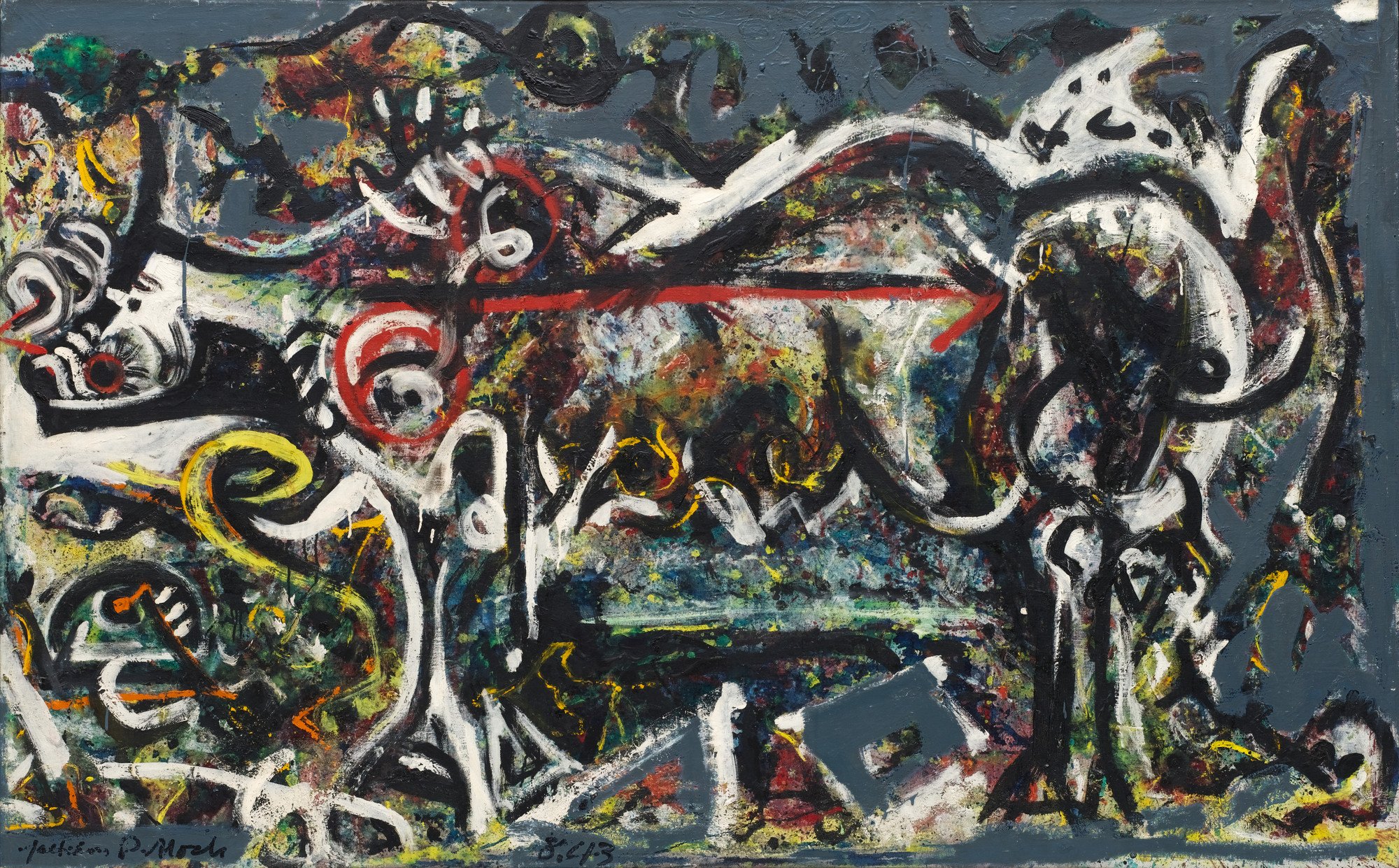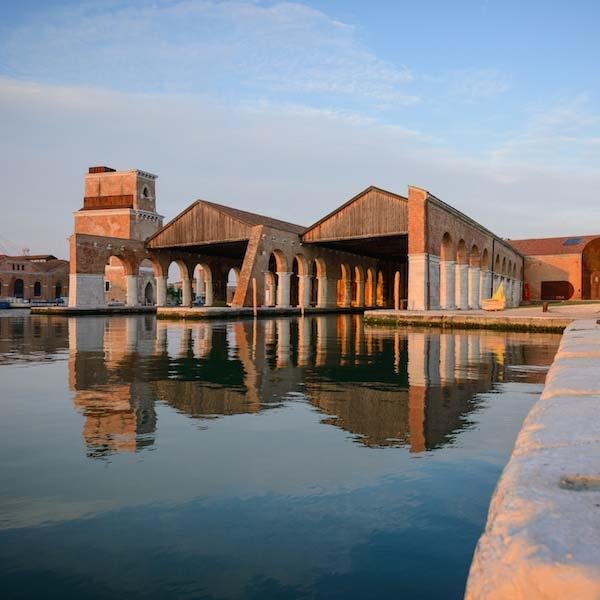“The Biennale Effect”: How and Why Native and Indigenous Artists Gain From Biennale Participation
With the 60th Venice Biennale well under way, this article attempts a discussion of the commercial implications of particular artists’ inclusion within the international art exhibition, with a developed line of thinking towards Native American artists such as Emmi Whitehorse. In the end, we will see that the structure of the Biennale itself can be said to favor the thematic and stylistic particularities of Native or Aboriginal artists, making for an interesting explanation of the latter’s growth within the global art market.
Emmi Whitehorse, Typography of Standing Ruins #3, 2024. Photo Courtesy: Garth Greenan Gallery, New York.
Emmi Whitehorse
Emmi Whitehorse is a fascinating artist, whose current presence in the Arsenale makes for an interesting study of said “biennale effect”. She is a member of the Navajo Nation, which extends over the land of Utah, Arizona, and New Mexico, where she finds representation from Chiaroscuro Gallery, Santa Fe [1], in addition to Garth Greenan Gallery, New York [2]. Whitehorse is also present in the current Venice Biennale, exhibiting her characteristic large-scale and oxymoronic “abstract landscapes” such as Typography of Standing Ruins #3 (2024) and Outset, Launching, Progression (2015), which are, at the time of writing, on view in the Arsenale.
It is common knowledge within the art world that an artist’s exhibition history can greatly influence their commercial value. Yet, with Emmi Whitehorse, the fruits of her inclusion within the Biennale may have arrived much sooner than usual. Two of her works have gone on sale in the recent New York Contemporary Day and Modern & Contemporary Day auctions at Sotheby’s and Phillips, respectively: #534 Untitled [3] and Canyon Lake I [4]. Emmi Whitehorse holds a strong auction history, in which estimates for works like #1236 Salinewere very recently – as the saying goes – “smashed” at Larsen Art, a rather minor auction house from Scottsdale, Arizona [5]. Chiaroscuro Gallery also warrants against incessant inquiries into available Whitehorse works since they are allegedly “sold out” [6].
Emmi Whitehorse, Canyon Lake I, 2001. Photo Courtesy: Phillips.
Even with the latter commercial advents, Emmi Whitehorse’s work deserves extended critical discussion beyond, as we have seen, oxymoronic terms like “abstract landscapes”. In fact, determining which end of the abstract-representation spectrum Whitehorse’s stands at is an incorrect way of assessing her work, critics quoted in Tiroly [7] claim. Rather, notions of landscape in Native or Navajo works are said to function irrespective of perspectival aesthetic categories, or of the boundless view over the (Western) horizon. Rather, in Whitehorse’s own words, her work acts as a means of “magnifying nature”, taking seemingly inconsequential material from the world around us and expanding into a grand, horizon-less force of nature [9]. Whitehorse also explains that she approaches panting as a type of “meditative” practice, in which the painter comes to know her land over time [10].
One can be said to approach a Whitehorse painting in three different appreciative stages [11] . First, there is the easy – but “pigeonholing” – comparison with “color-field” a master like Rothko [12] or a dream-scape stylist like Paul Klee.
Mark Rothko, Orange and Tan, 2954. Photo Courtesy: National Gallery of Art, Washington D.C.
Upon a closer art-historical look, however, the viewer can discover a second layer of visual interest within Native works like Whitehorse’s, namely the deep history of Abstract Expressionists like Pollock appropriating Navajo sand paintings, denoting a relation between “New York” and “Navajo” art forms far more complex than mere historical contingency.
Emmi Whitehorse, False Indigo (#1583), 2021. Photo Courtesy: Garth Greenan Gallery, New York.
Jackson Pollock, She Wolf, 1943. Photo Courtesy: MoMA.
The third and most “just” approach, Tiroly highlights, is immersing oneself in the age-long tradition of abstraction within Native American visual culture. Cherokee artist Sara Bates makes the provocative but interesting claim that the geometric abstractions of the (Western) modernists showed “nothing new to the world” [13], since Native ancestors have always known and depicted rhythms and patterns within nature, but without any use of strict representation of instantly recognizable objects or beings. It is also interesting to note how contra the Abstract Expressionists, Native artists have usually sought to communicate with society visually, not distinguish the artist as a creative entity cognitively or spiritually separate from the rest of society [14].
When describing her own work, Whitehorse kindly grants viewers that her work is understandable without any deep conceptual grounding in Native or Navajo philosophy or outlook [15]. However, she does employ the term hózhó noticeably frequently when “explaining” her work, which warrants further attention.
Although virtually untranslatable into English, hózhó can be taken to imply an active type of congruence between elements of nature and between man and nature. In other words, the term can imply a certain harmony or beauty intrinsic to the way in which things in nature, as it were, “fall into place”, denoting a supplementary element of “well-being” at the heart of everything [16].
One pleasant way of visualizing hózhó is to consider Whitehorse’s comparison of her creative process as a type of weaving, in which her painterly efforts fall together effortlessly yet still harmoniously and very much conducive to beauty. The artist has even referenced her own grandmother’s idle weaving as a source of painterly inspiration [17], whereas critic Jessica Horton has compared weaving qua inspiration to weaving as a means of thinking, of immersing oneself in the hózhó actively putting things together in the universe.
Emmi Whitehorse, Aquarium, 2010. Photo Courtesy: Garth Greenan Gallery, New York.
Navajo Hozho Turtle Basket. Photo Courtesy: Bahai Teachings.
Hózhó’s immanence throughout nature, in its logically unbounded and non-linear nature, also reminds Tiroly of time. In fact, the author highlights that Whitehorse’s paintings express a concept of time that is expressly non-linear, without any cognition of events strictly following one another [18]. Whitehorse’s oeuvrecannot, therefore, be said to exhibit the archetypal land in a single moment in time, but from a multitude of moments from different socio-cultural periods in the Navajo’s past.
These timely connotations will interestingly feature later in our speculations regarding the nature of the “Biennale effect” itself and its influence on the future market for Emmi Whitehorse’s paintings. Having discussed Whitehorse’s works quite extensively, however, let us now turn to a number of primary considerations pertaining to the role of the Venice Biennale in validating works like Whitehorse’s for future collectors.
Validating Artists within the Biennale
The Venice Biennale has been described a “branded event” [19]. Rodner et al. explain that “branding” cultural activities and products is crucially potent in distinguishing the latter among the wider market, acting as a type of “signposts in a busy marketplace”. Furthermore, studies [20] show that branded institutions can boost an artist’s tangible – or commercial – growth and popularity. The Venice Biennale has also been cited to make up the “pinnacle” of an artist’s career in terms of “brand” growth [21], although exhibition within such an event does not automatically guarantee commercial growth: several factors like exhibition location, number of fellow attending artists, and the size of the event need to be accounted for [22].
Another way in which Biennales validate their exhibiting artists is through implying a type of extra-Contemporaneity to their works. Perhaps out of all the global Biennales, the Venice International Exhibition encourages the idea of the art being “of the day” to the furthest extent. Maria Luis Cárdenas, director of the Caracas Museum of Contemporary art, underlines that the Venice Biennale not only shows a “fresh” side of an exhibiting country’s contemporary art scene, but can also, as it were, open the door for the latter’s participation into the global cultural scene of the day. Interestingly, this year’s Venice Biennale is said [23] to comprise of more dead artists than living: whether this influences the Biennale’s image of being “of the day” remains an open question.
The Arsenale in Venice. Photo Courtesy: Venice Biennale.
This temporal collapse of Biennales being an instant image “of the day” can be extrapolated into their spatial dimensions, too. Critic and philosopher Dave Beech contends that the very idea behind curating an international (or internationalist) creates a space of instant spatial collapse [24]. This remark is especially pertinent, again, towards this year’s Biennale, framed as “Foreigners Everywhere” – a generalist, internationalist, yet still poetic and inventive title.
Furthermore, Beech quotes Peter Osborne as not only characterizing the Biennale as centered around the “here” and “now” [25], but as delineating the exhibition as the basic unit of artistic significance within such an immediacy. The relationship of this thesis to our present inquiry should be apparent: by collapsing both time and space, as it were, into an immediate and “basic” unit of public exposure as possible, we can say that Biennales – and Venice at the forefront of all – holds perhaps one of the most potent commercial influences an artist can enjoy, confirming Rodner’s above research. At this point, we should also acknowledge Beech’s description of Biennales as structures of opportunity: because of its deeply ingrained internationalism, the absence of a Biennale in a particular location – and, by conversion, the absence of an up-and-coming artist within an important Biennale – implies a missed opportunity [26], encouraging our idea of an ever-present specter of commerce and cultural validation surrounding the Biennale.
Dave Beech. Photo Courtesy: a-n, The Artists Information Company.
At this point, it is interesting to compare these dynamics of time-space compression that critics such as Beech attribute to the Venice Biennale with the philosophical particularities of Emmi Whitehorse’s work. As we have seen at the beginning of our inquiry, Whitehorse’s paintings (can be said to) subscribe to a non-linear view of time, where events do not necessarily follow strictly one after the other; in a similar fashion, her work also goes beyond dichotomies of “idea” versus “representation” or “abstracts” versus “landscapes”. It seems, therefore, that work such as Whitehorse’s is, in a way, indirectly “fit” for growth following exhibition within a major Biennale: her work elegantly accommodates commercial growth by being both of “never” and of “always”, hence fit for the market at every point in time.
Coda: Indigenous Biennales?
To conclude, it appears that Biennales are strikingly ripe with opportunity for growth for a wide array of artists, but especially for Native or Indigenous artists such as Whitehorse. The latter’s works, whose a-temporality and sheer transcendental immanence make an interesting fit for the time-space compression of the “global exhibition”, stand to pave the way for many other Native artists to not only feature within major auctions, but diversify the commercial art world – a noble aim unto itself.
Virgil-Petru Munteanu
Art Markets Co-Editor, MADE IN BED










